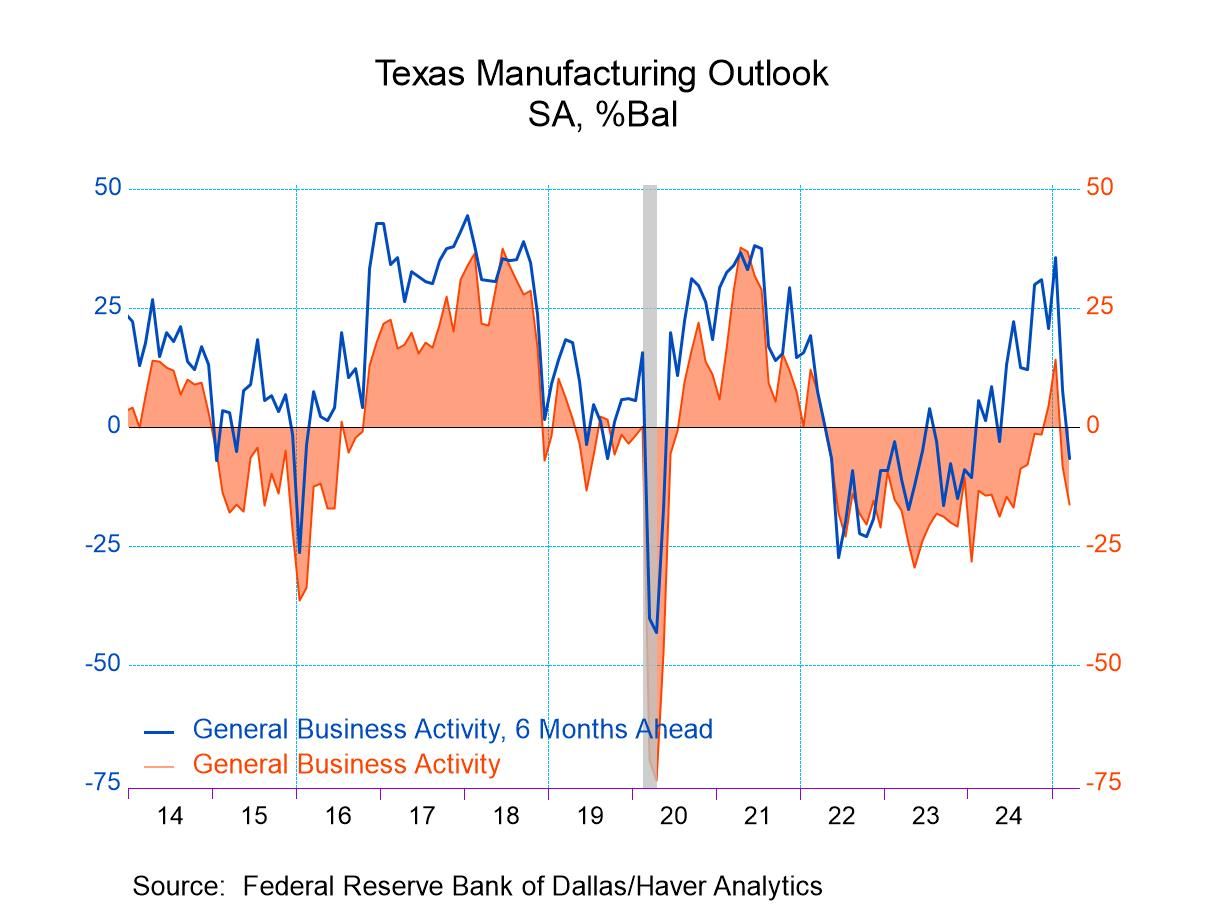The large industrial companies that form the most important vanguard readings for this report are the weakest in the first quarter with manufacturing backtracking to reading of +12 from +14 in the fourth quarter. That +12 reading is below its four-quarter average of +13.0. Large nonmanufacturing firms, however, stepped up with a reading of +35 in the first quarter up from +33 in the fourth quarter to the highest standing since the third quarter of 2006, which is the period over which we rank these data. The large manufacturing bellwether reading has a 66.7 percentile standing, while the total industry reading is static at +23 for the first quarter with the percentile standing and its 97th percentile.
The outlook for large manufacturing companies also stepped back to +12 in the second quarter from +13 in the first quarter. Its four-quarter average is +13.3 and that leaves it with the ranking at its 67th percentile quite similar to the current reading for the first quarter for manufacturing. Nonmanufacturing remained at a reading of +28 for the third quarter in a row; this is a second-quarter of 2025 reading; it's one-year average is +27.8 and at +28 this is also the highest outlook reading for nonmanufacturing on this timeline. The total industry reading has an outlook in the second quarter of +20.0, the same as the first quarter, down slightly from the fourth quarter; it compares to a four-quarter average of +20.3 and has a queue percentile standing in its 92nd percentile.
The outlook readings, for the most part, are firm-to-strong. Unfortunately, the manufacturing readings are the weakest; instead of being on their 90th percentile like the total industry and nonmanufacturing, manufacturing readings have 66th percentile standing which leaves them only at the lower border of the top third all readings since 2006.
Nonmanufacturing industries show the strongest readings with 90th percentile standings for transportation, restaurants & hotels, wholesaling, and services for businesses. Among the other reporting nonmanufacturing sectors, the standings are in their 80th percentiles or higher except for personal services that has a softer 70th percentile standing.
Compared to the period just before COVID, all sectors are higher except for services for businesses and personal services that are each one or two points lower than they were in the fourth quarter of 2019 before COVID struck. The strongest advances from the pre-COVID reading are from restaurants & hotels with the 35-point rise in their index, as well as retailing, and real estate each with 24-point increases in their respective indexes; wholesaling has a 22-point rise in its index. Large firm manufacturing overall has a 12-point rise in its index on that timeline while construction has an increase of only two points.
The responses for medium- and small-sized firms are not considered to be harbingers in this survey, but for manufacturing both medium- and small-sized firms have rankings in their low 80th percentile while the nonmanufacturing rankings have standing in their 97th and 98th percentile. However, the outlook for medium- and small-sized firms carry percentile standing in their 70th percentile for manufacturing. There still are readings with rankings in the high 90th percentiles for the nonmanufacturing sector that continues to be quite strong across Japan regardless of the size of the firm reporting




 Asia
Asia




